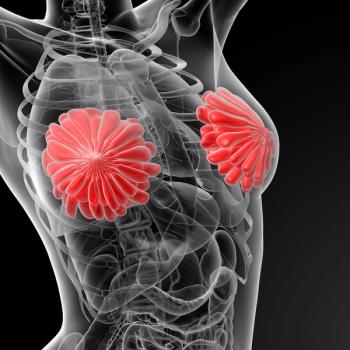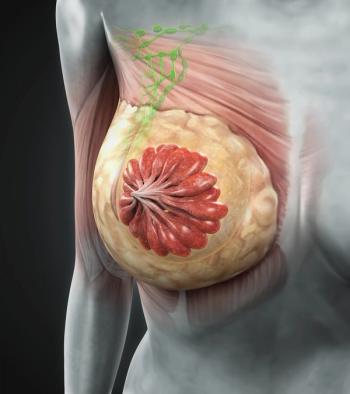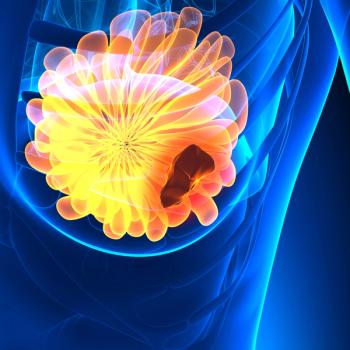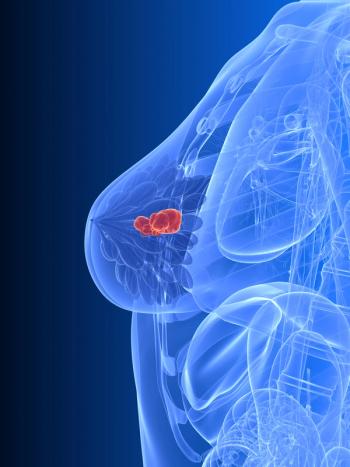
Markers Could Predict Risk of Brain Metastasis in Breast Cancer Patients
Serum matrix metalloproteinase 9 (MMP-9) and HER2 extra-cellular domain (HER2-ECD) might be predictive biomarkers for the metastasis of breast cancer to the brain, according to a case-control study.
Serum matrix metalloproteinase 9 (MMP-9) and HER2 extra-cellular domain (HER2-ECD) might be predictive biomarkers for the metastasis of breast cancer to the brain, according to authors of a case-control study reported at the 20th Annual Scientific Meeting of the Society for Neuro-Oncology, held November 19-22 in San Antonio, Texas.
“In multivariate analysis, serum HER2-ECD and MMP-9 levels accurately discriminated cases from controls,” reported Amélie Darlix, MD, of the department of medical oncology, ICM Val d'Aurelle, Montpellier, France, and colleagues, in a poster presentation. “These results need to be validated in further larger prospective studies and extended to brain metastases from other cancers.”
Breast cancer is the second leading cause of metastatic brain tumors, Dr. Darlix noted. The researchers identified four candidate predictive serum biomarkers for this phenomenon: an astrocytic biomarker, protein S100β, which is associated with altered blood-brain barrier; neuron specific enolase (NSE); MMP-9; and HER2-ECD.
The candidate biomarkers were analyzed retrospectively from frozen serum samples for 88 consecutive adult women with breast cancer brain metastases who were treated at the Montpellier Cancer Institute between 2008 and 2015. These case patients were matched by age, tumor biology, and previous metastatic treatment history to 162 control patients with metastatic breast cancer but no central nervous system involvement, the researchers reported.
“Serum ACE was more frequently abnormal in cases than controls (P = .0004) and its median was significantly higher in cases (10.0 ng/mL, range 1–5122 in cases compared to 3.0 ng/mL, range 1–768 in controls; P = .0405),” they noted. ECOG performance status was also poorer in cases, as expected.
“ROC curves for serum HER2-ECD, NSE, MMP-9, and S100β were calculated to evaluate each biomarker’s ability to classify patients as cases or controls,” they reported. In univariate analyses, “serum HER2-ECD, NSE, and MMP-9 levels were significantly higher in cases than in controls.”
In multivariate analyses, HER2-ECD and MMP-9 level associations remained statistically significant (hazard ratio [HR] for HER2-ECD, 4.25 [95% confidence interval (CI), 1.9–9.6]; P < .0001; HR for MMP-9, 3.5 [95% CI, 1.5–8.4]; P = .005). Medan HER2-ECD was 21.1 ng/mL among case patients and 12.3 ng/mL in control patients; median MMP-9 levels were 422.9 ng/µL in cases and 320.5 ng/µL in controls.
Newsletter
Stay up to date on recent advances in the multidisciplinary approach to cancer.
































































































